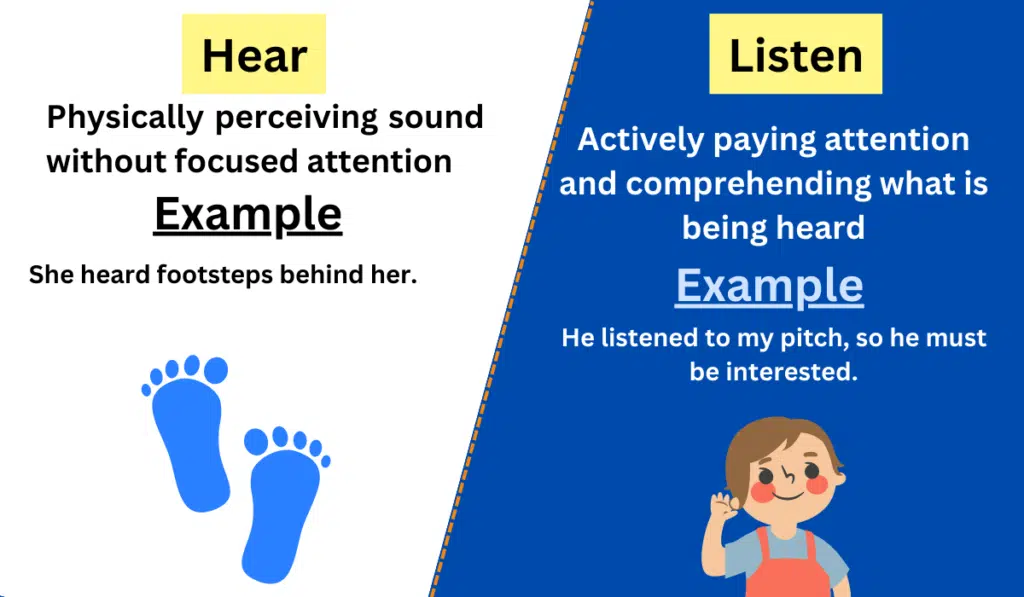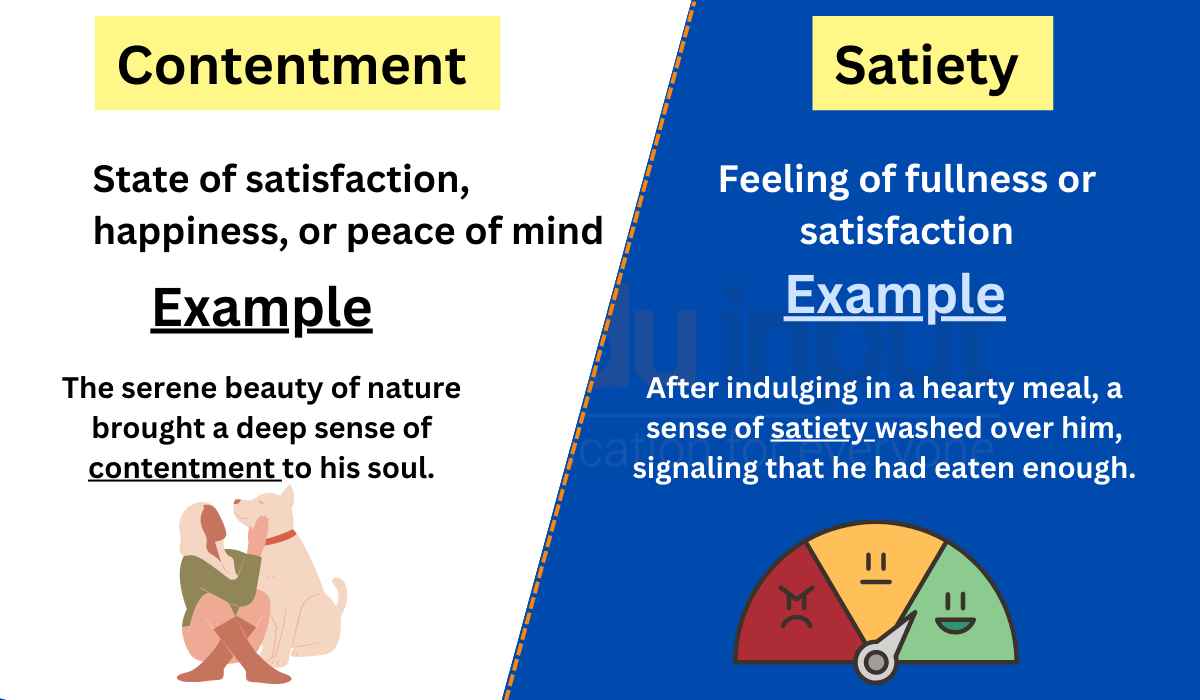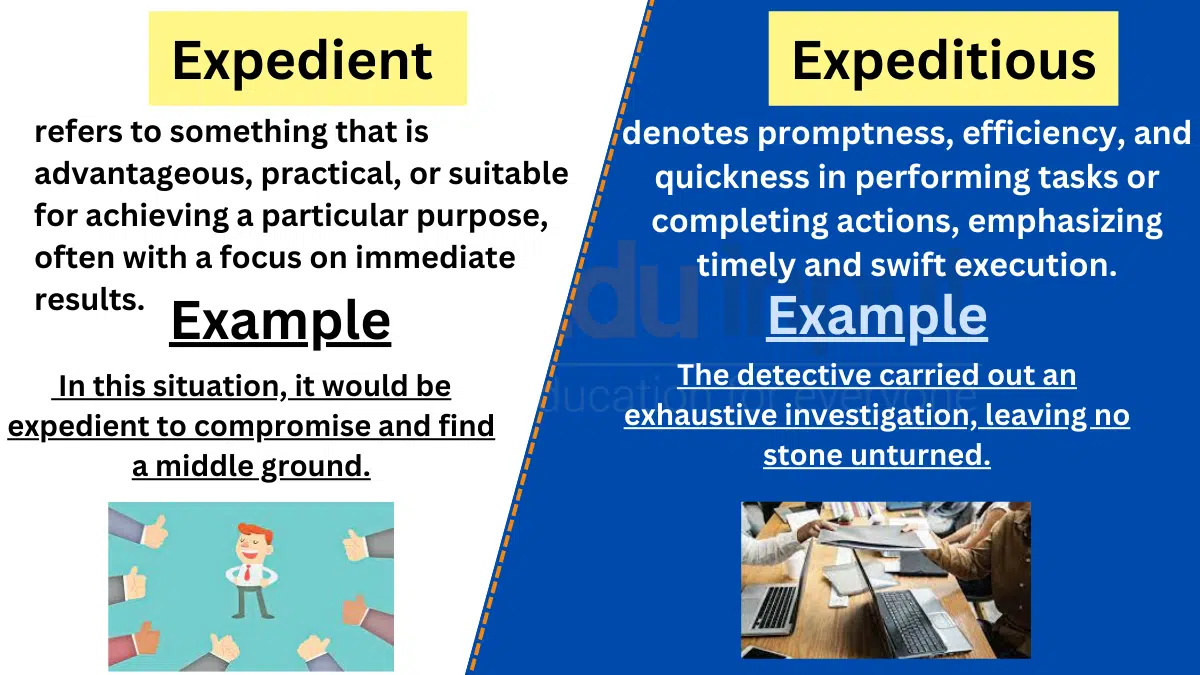Hear vs. Listen-Difference between and example
In the realm of language, certain words may appear similar but possess distinct meanings and applications. “Hear” and “listen” are two such words that often cause confusion.

In this article, we will delve into the nuances of “hear” and “listen,” exploring their definitions, differences, and appropriate usage.
By comprehending the distinctions between these terms, we can enhance our communication skills and engage more effectively in conversations.
Let’s embark on this linguistic journey to unravel the mysteries of “hear” and “listen.”
Meanings and Examples
Hear Definition
Definition: “Hear” refers to the physiological act of perceiving sound through the ears without necessarily paying deliberate attention or focusing on the sound.
Examples of Hear
- I could hear the sound of raindrops tapping against the windowpane.
- She could hear the distant laughter of children playing in the park.
- He hears the melody of the song but doesn’t pay attention to the lyrics.
Listen Definition
Definition: “Listen” implies actively paying attention to and making an effort to understand or comprehend the sounds or words being heard.
Examples of Listen
- Please listen carefully to the instructions before beginning the exam.
- She listens attentively to her friend’s problems and offers support.
- We should listen to differing perspectives to foster understanding and empathy.
Difference between Hear and Listen
| Category | Hear | Listen |
| Meaning | Physically perceiving sound without focused attention | Actively paying attention and comprehending what is being heard |
| Example | “I could hear the sound of raindrops tapping against the windowpane.” | “Please listen carefully to the instructions before beginning the exam.” |
| Usage | Casual hearing, passive reception | Active engagement, intentional focus |
| Context | Everyday situations, background noise | Conversations, lectures, music, audio content |
Usage in a Paragraph
Imagine being in a crowded café, where the chatter of customers, clattering dishes, and the hiss of the espresso machine fill the air.
Amidst the hubbub, you can hear snippets of conversations and laughter, but it’s challenging to discern individual voices.
This is a classic example of hearing, where the sounds reach your ears without your conscious effort to listen and understand each conversation.
Now, let’s shift to a different scenario. You are sitting in a lecture hall, listening attentively to the professor’s words.
You actively focus on the subject matter, taking notes and absorbing the information being shared.
In this context, you are not merely hearing the professor’s voice but actively listening to grasp the content and gain knowledge.
Understanding the distinction between “hear” and “listen” is crucial for effective communication.
While hearing is a passive process that involves perceiving sounds, listening is an active and intentional act of paying attention and comprehending what is being heard.
By developing our listening skills, we can engage more meaningfully in conversations, deepen our understanding of others, and enhance our overall communication abilities.
So, let us strive to not only hear but truly listen to the world around us.







Leave a Reply